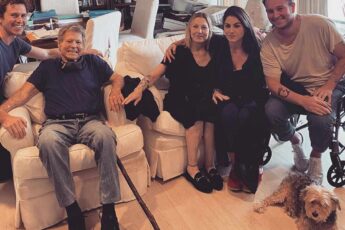His body was itchy, and at first, he thought it was just an allergy. Maybe a reaction to a new soap, a change in detergent, or perhaps a certain food he’d recently eaten. It seemed minor at the time, something that could be easily fixed with a bit of cream or an antihistamine. But that simple irritation gradually turned into a relentless, all-consuming sensation that would change him in ways he never expected.
Laura Gómez, a 32-year-old young mother, vividly remembers how the discomfort started. It began subtly—an occasional itch here and there, nothing too alarming—yet within days, it had become an unbearable, almost tormenting sensation that wouldn’t let go. At first, she tried to brush it off. She swapped her usual soap for a hypoallergenic one, avoided eating certain foods she suspected might trigger allergic reactions, and even visited her dermatologist. The doctor examined her skin, prescribed ointments, and recommended antihistamines, claiming it was likely an allergy. Laura followed the advice diligently, applying creams and popping pills, but nothing made a difference.
Instead, things only got worse. The itching grew more intense, spreading across her arms, legs, and even her torso. It was a deep, gnawing sensation—like a crawling, tingling feeling that seemed to come from beneath her skin rather than on its surface. Night after night, Laura struggled to sleep, lying awake, her mind hyper-focused on the relentless itch that refused to let up. Her mood frayed, frustration and despair creeping in as she watched her days diminish to endless scratching and discomfort.
“One night,” she recalls with a trembling voice, “I was scratching so much I was bleeding. My arms were raw. I felt like something was moving inside me—something I couldn’t see or understand. I was terrified because this wasn’t just an allergy anymore; it was something that felt deeply wrong, something I never expected.” The sensation was so overpowering that her entire life had become wrapped around trying to find relief, yet each attempt seemed to only intensify her misery.
Her young children watched helplessly as their mother struggled. Her husband did everything he could—bringing her cold cloths, helping her apply ointments, and sitting by her side during those long nights. Yet, despite their efforts, the itching persisted, and the sense of helplessness grew heavier. Laura’s days became a blur of discomfort—she couldn’t focus on her work, her children, or even basic household chores. All she could think about was that overwhelming sensation, that crawling feeling beneath her skin that refused to be ignored.
Eventually, after nearly a month of suffering and endless visits to healthcare professionals, a new doctor ordered a series of tests—more detailed blood work, skin biopsies, and scans. The results came like a thunderclap. Laura was diagnosed with a rare, severe form of an autoimmune skin condition. The diagnosis explained everything—the relentless itch, the burning sensation, the strange crawling feeling. What she had initially dismissed as a simple allergy was actually a complex medical issue that could have serious consequences if left untreated.
The diagnosis was a shock, but it also brought a strange relief. Suddenly, there was a name for what she was experiencing, a path toward treatment and healing. The doctor explained that her immune system was mistakenly attacking her skin and nerves, causing extreme inflammation and sensation. The treatment would involve powerful immune-suppressing medications, lifestyle adjustments, and careful monitoring, but it was a start to reclaiming her life.
However, the road ahead was not easy. The medications carried side effects—fatigue, increased vulnerability to infections, and emotional ups and downs. Laura had to become her own advocate, learning about her condition and balancing her responsibilities as a mother with her need for treatment. Her days of blissful ignorance about her health were over; every new day brought with it a challenge to manage her condition and keep hope alive.
Despite the struggles, Laura found strength in her children and her community. She shared her story openly, refusing to let fear or shame define her. Her journey is a testament to resilience—the kind of resilience that many don’t see behind the scenes of chronic illness. When she looks into her children’s eyes, she remembers why she fought so hard to get better, to find answers, and to keep moving forward.
Her experience underscores an important truth: sometimes what begins as a minor annoyance can mask a much deeper issue. It’s a reminder that listening to our bodies and seeking professional help can be life-changing—even life-saving. And for Laura, her story is still ongoing—a story of hope, courage, and the relentless pursuit of wellness despite the unpredictable turns of her health.
Today, she continues her treatment with a newfound sense of purpose. She’s also become an advocate for awareness—sharing her journey in hope that others facing similar struggles will look beyond the surface, listen to their bodies, and seek the help they need. Because sometimes, the most relentless problems hide behind the most ordinary beginnings, and it’s up to us to unravel




